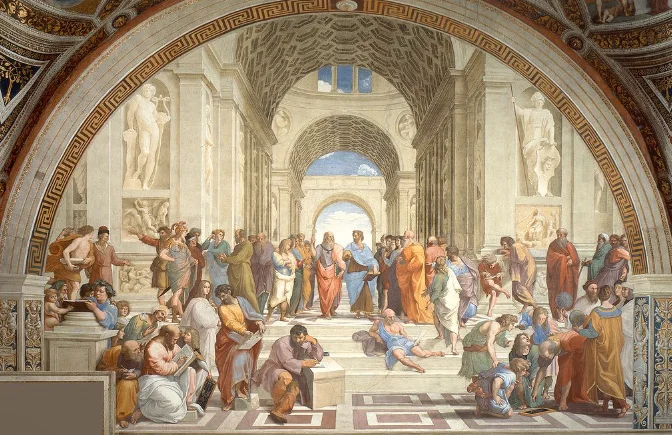Introduction
The term Ciulioneros evokes a distinct cultural heritage shaped by a history of art, community, and shared traditions. Originating in close-knit communities, Ciulioneros culture is known for its deep respect for nature, its unique art forms, and a lifestyle rooted in collaboration and community values. Over generations, this culture has evolved, preserving its identity while adapting to modern influences, making it both unique and resilient.
This comprehensive guide provides an in-depth look into Ciulioneros, from historical origins to cultural values, artistic expressions, and their relevance today. We’ll also explore how Ciulioneros traditions adapt to the present day, influencing diverse communities globally. This article includes helpful tables, key points, and bullet lists to ensure clarity and ease of understanding.
1. Origin and Historical Significance of Ciulioneros
They originated in small communities, primarily among artisans and tradespeople who developed unique cultural expressions to depict their lives and experiences. These individuals formed a distinctive identity, incorporating shared traditions, artistic representations, and a deep connection to the environment.
Key Milestones in the History of Ciulioneros:
- Early Beginnings: Their culture emerged in a trade community, initially focusing on craftsmanship.
- Cultural Integration: Over centuries, neighboring cultures influenced Ciulioneros art, language, and rituals, leading to a rich blend of traditions.
- Preservation Through Oral Tradition: Stories, values, and history were passed down orally, creating a strong sense of identity and continuity.
Today, Ciulioneros culture stands as a testament to the enduring nature of community and tradition. The history of Ciulioneros illustrates how communities adapt and grow while preserving their core identity.
2. Core Cultural Values and Community Impact
The essence of Ciulioneros is rooted in strong cultural values that foster unity, resilience, and community strength. These values are woven into every aspect of their lives, from social interactions to festivals and artistic practices.
Primary Values of Ciulioneros Culture:
- Community Cooperation: Their place high importance on working together, reinforcing a sense of shared responsibility.
- Respect for Nature: The natural world is central to Ciulioneros life, guiding their practices in sustainability and environmental care.
- Pride in Heritage: Celebrating their history and traditions fosters community pride, helping preserve cultural identity.
These values shape daily life in their communities, creating a collective focus on harmony, environmental respect, and mutual support. These ideals are especially evident in their communal projects and cultural events, which bring people together and solidify the community’s bond.
3. Art Forms and Symbolism in Ciulioneros
Artistic expression is a significant aspect of it, known for its intricate designs and symbolism that represent the beliefs, values, and stories of the community. Over time, Ciulioneros artists developed a recognizable style that combines both realistic and abstract elements to convey themes of nature, community, and resilience.
Key Elements of Ciulioneros Art
| Art Form | Description & Symbolism | Typical Mediums Used |
| Paintings | Depicts nature, seasons, and mythical stories | Oil paints, natural dyes |
| Sculpture | Represents historical figures, community symbols | Wood, clay, metal |
| Textile Arts | Features intricate patterns telling stories of origin | Wool, silk, hand-dyed fabrics |
| Ceramic Pottery | Decorated with symbols of unity and protection | Earthenware, porcelain |
| Wood Carving | Often depicts animals or symbols representing strength | Locally sourced wood, natural stains |
These art forms are integral to it, with each piece carrying meaning and serving as a medium for storytelling. Artisans craft their works with precision, often incorporating symbols of unity, protection, and resilience that hold cultural significance.
Symbolism in Ciulioneros Art
The symbolic elements in their art reflect values, beliefs, and experiences. Some common symbols include:
- Circle Patterns: Represent unity and harmony within the community.
- Animal Imagery: Each animal represents a value (e.g., eagle for strength, dove for peace).
- Nature Symbols: Trees, rivers, and mountains signify life, growth, and stability.
Benefits of Ciulioneros Art to the Community:
- Strengthens Cultural Identity: Art reinforces shared beliefs and values, promoting a sense of belonging.
- Encourages Intergenerational Knowledge Sharing: Young artists learn techniques and stories, keeping traditions alive.
- Provides Economic Opportunities: Artisans sell their crafts locally and online, bringing financial support to the community.
4. Traditional Celebrations and Festivals of Ciulioneros
Celebrations in their culture are community-centered, often involving traditional music, dance, and feasting. These gatherings are not only a time for joy but also serve as a means to honor ancestors, reflect on cultural roots, and teach younger generations.
Popular Ciulioneros Celebrations
| Festival Name | Purpose | Key Activities |
| Harvest Festival | Celebrates the season’s yield | Feasting, sharing produce, traditional dances |
| Artisan’s Day | Honors local artists and their contributions | Art displays, workshops, live performances |
| Unity Gathering | Promotes community ties and shared values | Storytelling, games, communal meal prep |
| New Year Celebration | Marks the start of the community calendar | Ritual dances, blessing ceremonies |
These events strengthen community bonds, allowing it to gather, celebrate, and reinforce their heritage. Each festival brings together different generations, creating a space where elders pass down cultural wisdom and young members learn about their roots.
How Festivals Benefit Ciulioneros
- Cultural Continuity: Festivals preserve traditions, ensuring the culture’s longevity.
- Community Building: Celebrations foster unity and a sense of belonging.
- Economic Activity: Festivals attract visitors, supporting local artisans and businesses.
5. The Adaptation of Ciulioneros in the Modern World
Though deeply rooted in tradition, their culture has adapted to modern influences. With technology, Ciulioneros artisans and communities can now share their art and culture more widely, reaching a global audience.
Modern Innovations in Ciulioneros Culture
- Digital Art Platforms: Artisans sell their work online, preserving tradition while reaching wider audiences.
- Eco-Friendly Practices: Sustainable practices in crafts align with environmental consciousness, appealing to modern values.
- Collaborations with Global Artists: Joint projects with artists worldwide help showcase their culture in diverse ways.
The openness of Ciulioneros to embrace new mediums and collaborate allows the culture to thrive in a contemporary setting without losing its unique identity.
Challenges and Opportunities
While modernization offers growth, it also presents challenges. Balancing cultural preservation with innovation is key to maintaining authenticity. However, the exposure their gains through these adaptations opens opportunities for cultural exchange and economic support, helping to safeguard their heritage.
Conclusion
Ciulioneros culture exemplifies how tradition, art, and shared values can shape a community, building a collective identity that is both resilient and adaptable. From historical beginnings as a group of artisans and tradespeople to a modern cultural presence with global reach, Ciulioneros demonstrates the strength of community-centered living.
Through art, festivals, and communal values, their preserves its heritage while adapting to the demands of modern life. The combination of deep-rooted traditions with openness to change keeps their culture relevant, inspiring, and meaningful in today’s interconnected world. Whether you are an art enthusiast, a cultural historian, or someone interested in different ways of life, exploring their offers valuable insights into the importance of preserving and celebrating diverse cultures.
FAQs About Ciulioneros
What is the origin of Ciulioneros culture?
Their culture began in close-knit artisan communities where people shared a strong bond with nature and each other. Its origins can be traced back to small trade groups that relied on craftsmanship, which evolved to encompass a unique blend of art, values, and traditions.
What are the core values of Ciulioneros?
Their emphasize community cooperation, respect for nature, and pride in heritage. These values are central to daily life, guiding social interactions, community events, and their sustainable approach to the environment.
What art forms are unique to Ciulioneros?
Their art includes various forms such as painting, sculpture, textile arts, ceramic pottery, and wood carving. Each art form carries cultural symbolism, often depicting themes of unity, nature, and resilience that are significant within the community.
How do Ciulioneros celebrate their culture?
Ciulioneros culture is celebrated through festivals like the Harvest Festival, Artisan’s Day, and the Unity Gathering. These events involve music, dance, storytelling, and traditional rituals that bring the community together and reinforce their shared heritage.
How has Ciulioneros culture adapted to modern times?
While maintaining traditional values, Ciulioneros culture has embraced digital art platforms, eco-friendly practices, and collaborations with global artists. These adaptations have allowed them to share their culture with wider audiences while preserving authenticity.
Why is Ciulioneros culture important today?
Ciulioneros culture offers insights into the power of community, sustainability, and cultural preservation. It reminds us of the importance of shared values, artistic expression, and environmental respect, all of which remain relevant in the modern world.






